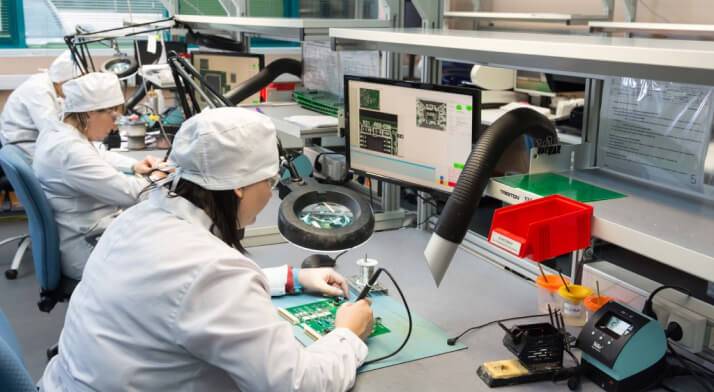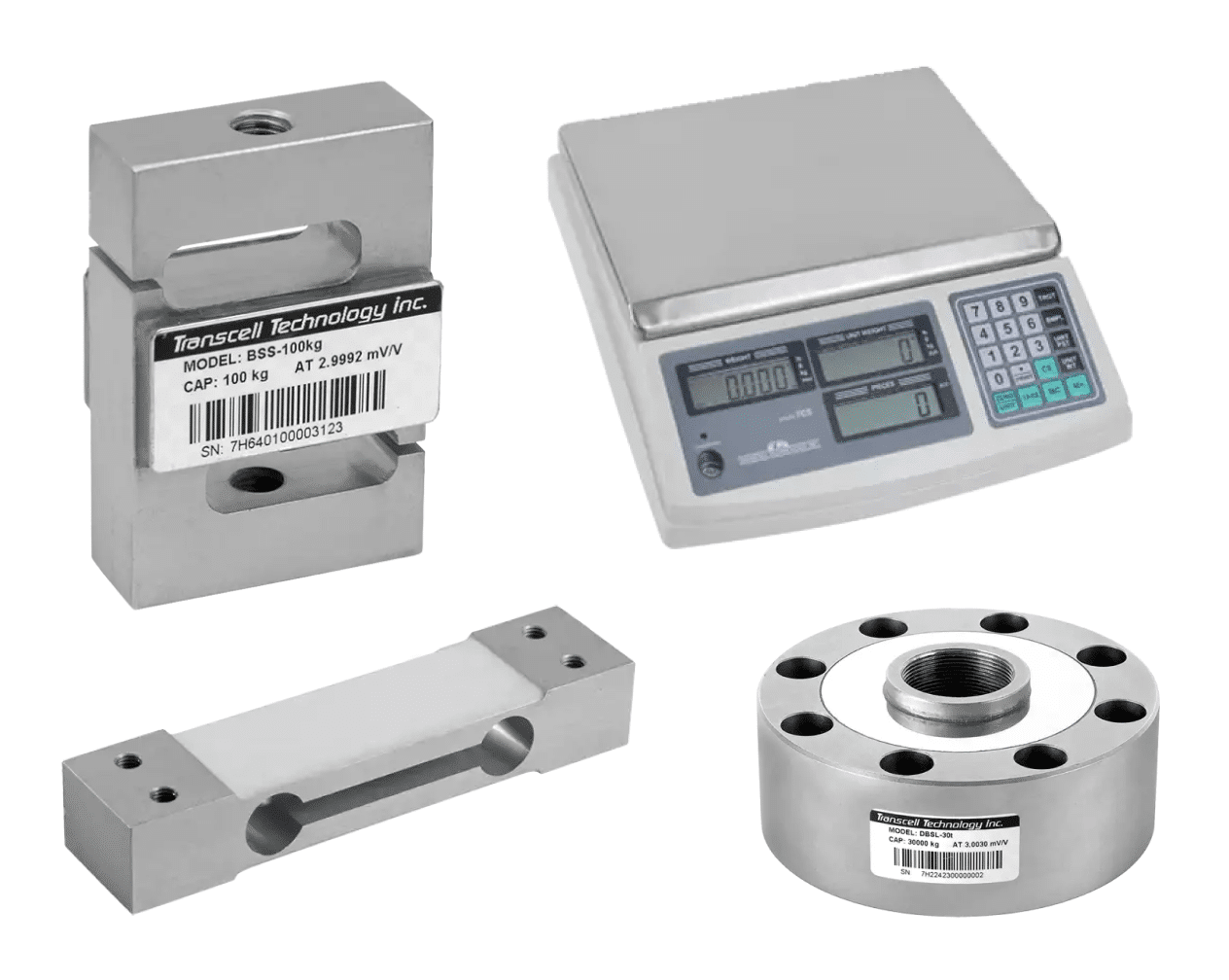Troubleshooting FAQs
Get Expert Answers, Fast
The answers to these common questions may help you get back up and running quickly. We’re always ready to help. Contact our Service Department: (847) 419-9180

This indicates that the scale is ‘under’ gross zero. Try the following in the order listed:
- Check to ensure that the platter/tray is installed on top of the weighing platform (if equipped).
- ZERO the scale.
- Perform a zero calibration.
- Clean out / remove debris underneath the scale platform.
- Make sure that the adjustable scale feet (if equipped) are not turned in to the point that they are contacting the bottom of the platform – if they are, turn them out a few turns and then re-level the platform.
- Check for a damaged load cell.
For AC mains powered scales, check & repair the following in the order listed:
- Check to ensure that the battery terminals are connected.
- Inspect battery terminals for corrosion.
- Check/replace the internal fuse (if equipped).
- Check to ensure that all display connectors are plugged into the scale (if applicable).
- Unplug the printer or other peripheral from the scale (if equipped).
- Unplug the platform from the scale display unit (if applicable).
- Carefully disconnect the rechargeable battery and try using AC power instead.
- Replace the rechargeable battery.
- Replace the battery charger.
- Contact our service department: (847) 419-9180.
For alkaline battery-powered scales, check & repair the following in the order listed:
- Inspect battery contacts for corrosion.
- Replace the alkaline batteries.
- Check to ensure that all display connectors are plugged into the scale (if applicable).
- Unplug the printer or other peripheral from the scale (if equipped).
- Unplug the platform from the scale display unit (if applicable).
- Contact our service department: (847) 419-9180.
For rechargeable battery-powered scales, check & repair the following in the order listed:
- Unplug the scale from the wall outlet and check to make sure power is available.
- Temporarily remove (bypass) any power strips or extension cords in use.
- Check to ensure that the scale is plugged into a wall outlet.
- Check to ensure that the power cord and/or AC adaptor is plugged into the power jack on the scale.
- Check to ensure that all display connectors are plugged into the scale (if applicable).
- Check to ensure that the power switch on the scale is in the ON position (if equipped).
- Check/replace the internal fuse (if equipped).
- Unplug the printer or other peripheral from the scale (if equipped).
- Unplug the platform from the scale display unit (if applicable).
- Check and replace the AC adaptor (if equipped).
- Contact our service department: (847) 419-9180.
Your scale is in setup (configuration) mode. To resume normal operation, it must be taken out of setup mode. Please consult your manual. Most of the time, this can be fixed simply by toggling the setup/calibration switch on the rear of your display unit.
First, clean out underneath the scale, removing any obstructions and foreign material which may have accumulated.
Inspect the scale carefully for obvious signs of damage, including dents in the platform, bent feet, or cut / frayed cables.
Make sure that the adjustable scale feet (if equipped) are not rotated to the point that they are contacting the bottom of the platform – if they are, turn them out a few turns and then re-level the platform.
If your scale is still not operating accurately, please call our service department: (847) 419-9180.
This generally means that you have overloaded your scale. Please remove the item(s) to see if the message disappears. If re-calibration doesn’t do the trick, then common causes include:
- A loose connection at the junction box (if equipped) or inside the digital weight indicator.
- A cut / frayed homerun cable.
- A damaged load cell.
- A configuration error.
If you need a replacement TI–500E adaptor, you will need to locate your TI–500E serial number located at the back of the unit. Based on the information below, you can match your TI–500E serial number with the correct adaptor.
- If you have a serial number that is Less than 14 digits: use 12 Volt – 120 VAC. 60 Hz, 500mA Female Plug Adaptor (Part Number: P250116237)
- If you have a serial number starting with 7D200100xxxxx: use 12 Volt – 120 VAC. 60 Hz, 500mA Female Plug Adaptor (Part Number: P250116237)
- If you have a serial number starting with 7D190370xxxxx: use 9 Volt – 120 VAC, 60 Hz, 500mA Female Plug Adaptor (Part Number: 250117236)
If you have purchased the Bluetooth COM option for your Transcell indicator, you can download a free app on your mobile device to test Bluetooth connectivity and communication (Bluetooth Smart only)
For Android devices:
- On your Android device, go to the Google Play Store
- Look for Laird ToolKit (it’s a free app)
- Select Serial (VSP)
- On the indicator, press the ON/PRINT key
- On the Laird app, you should see a weight string
- On the app, you should see a weight string.
- On the App, type “P” and press the “Send” button
- Hit the Scan button
- Look for Laird BL600 (that’s the Bluetooth radio inside of the indicator)
- Download and run the Laird ToolKit app
For Apple devices:
- On your Apple device, go to the iTunes Store
- Look for Laird Serial (it’s a free app)
- Select Serial (VSP)
- On the indicator press the ON/PRINT key
- On the Laird app you should see a weight string
- On the app, you should see a weight string.
- On the App type “P” and press “Send” button
- Hit the Scan button
- Look for Laird BL600 (that’s the Bluetooth radio inside of the indicator)
- Download and run the Laird Serial app
Before starting Physical Connections:
- If your computer has a USB port but your scale has an RS-232 port, connect them together with a USB to serial adapter drivers.
- If your computer has a USB port but your scale has an RS-232 port, please install the drivers that came with your USB to serial adapter A-menu.
- By default, the TI-500E is set to demand mode transmission; please verify this setting hasn’t changed, i.e. we want A3 to be set to “d” Starting HyperTerminal and setting up a new connection.
- Once HyperTerminal opens, it will automatically prompt you to create a new connection if none exist. If no connection(s) exists, you can click File | New Connection to create a new one.
- In the Connect To dialog box, choose the COM port being used by your scale (usually COM1 or COM2) from the Connect Using drop-down list and click OK.
- Then, choose communications parameters that match the scale. (For the TI-500E, the default settings are 8 data bits, no parity (set to None), one stop bit).
- When you click OK, HyperTerminal will immediately open a connection to the port. You’ll then be ready to communicate with the TI-500E.
- On the TI-500E, press the PRINT key once => the HyperTerminal screen should populate with weight data, e.g. 12345.6 KG GR (note that you may also see some ‘funny’ characters, e.g. smiley faces – these are simply nonprintable ASCII characters and can be ignored)
- On the PC keyboard press the CAPS LOCK key·
- On the PC keyboard press the Z key once => the TI-500E display should go to zero
Note: Remember that the TI–500E will not transmit any data if it is in motion or if an error message is being displayed.
Make sure the set–up/ A menu is proper. If not, please review set up manual again, please visit download page.
If they are set up properly, please follow the steps below:
- You can try all the other commands, too (reference the manual)
- On the PC keyboard press the P key once => the HyperTerminal screen should populate with weight data, e.g. 12345.6 KG GR (note that you may also see some ‘funny’ characters – these are simply nonprintable characters and can be ignored)
- Test #2 (This test is to check communication from the computer to the indicator)
- Test #1 (This test is to check communication from the indicator to the computer)
- Set flow control to NONE or OFF.
- In the port property sheet that appears, choose a port speed (bits per second) that matches the device. (Note: default TI-500E setting is 9600)
- Specify a name for the connection (e.g. SCALE), choose an icon, and click OK.
- Click Start | Programs | Accessories | Communications | HyperTerminal.
- By default, the TI-500E is configured to ‘talk’ to a printer only – so change A6 from “1” to “0”
- If both your computer and your scale have a USB port, click here to obtain the latest USB drivers for your operating system
- If both your computer and your scale have a COM port, no drivers are required
- If both your computer and your scale have a USB port, connect them together using a standard USB cable (usually included with the scale)
- If both your computer and your scale have a COM port, connect them together using a null modem serial cable (such as the NMC-1)
- Make sure that the TI-500E is connected and calibrated to a scale platform (if the indicator is showing an overload message or is in motion it will not transmit any data)



